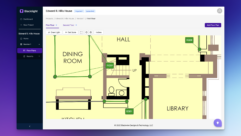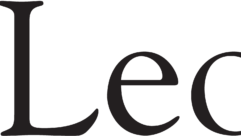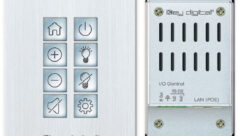
CEDIA Preview
Aug 1, 2008 12:00 PM,
By Jack Kontney
New technologies are making waves at the 2008 CEDIA Expo.

Internet protocol (IP) has already won the war for control of residential AV installations, and CEDIA Expo 2008 features many developing IP-related technologies. Broadband delivery and IP control of the entire home experience is now very practical, limited only by the home’s available bandwidth.
As the CEDIA Expo arrives at the Colorado Convention Center in early September, more than 25,000 designers, integrators, architects, and builders are expected to converge on Denver to see the latest products and technologies from 600 manufacturers — including 75 new exhibitors.
In recent years, the show has seen incredible advances in IP control and AV that enable elegant, functional residential installations and integration capabilities far beyond those from a decade ago. What’s next? Which technologies and product areas will leap to the forefront of integrator consciousness at this year’s expo?
CEDIA Senior Director of Technology Dave Pedigo is staff liaison to the CEDIA Technology Council, which is charged specifically with identifying and tracking the products and technologies that will have a growing impact on the industry. Formed about a year ago as a new association initiative, the Technology Council is driven by a panel of integrators with some manufacturer input. “Our mission is to gather information regarding the state of the industry — trying to predict what technologies are going to make an impact within the next 12 to 18 months and then out to five and 10 years, so that our members can start preparing their business models for future development,” Pedigo says.
Armed with Technology Council data and his own perspective, Pedigo recently discussed with SVC some of the technology areas that are expected to make the biggest impact on the industry heading into this year’s CEDIA Expo.
VIDEO DISPLAY TECHNOLOGY
Every year, we see bigger, brighter flatpanel displays. This trend will no doubt continue. LCD designs will soon be available with a depth of 3/4in., with a 50-percent decrease in weight and reduced power consumption. This, in turn, means more creative mounting options without special infrastructure — especially with articulated and motorized designs. On the flip side is the development of even bigger direct-view televisions. With the 100in. barrier only recently broken, it was stunning to see a working 150in. plasma screen with 4K resolution at CES 2008.
Another advance slated for several years down the road is ultra-high-definition video (UHDV), also called Super Hi-vision. Currently under development by NHK in Japan, the proposed format has a resolution of 7680×4320 pixels — four times as wide and high or 16 times the pixel resolution as existing HDTV. Experts are not convinced the format will ever be suitable for home viewing because ultra-large screens must make the increased resolution capabilities discernable to the human eye. Many suggest it is likely to be more practical as a largescreen specialty format for rides, museums, and live events, rather than for home theaters.
Still, home screens are finding ways to grow. In the past couple years, 2.35:1 projection, for instance, has also really taken off — especially with the introduction of anamorphic lenses for home use. As a consequence, product trends include a move to curved screens for a more immersive experience. This means easier integration of bigger screens, to the point where the left-center-right loudspeakers can all be easily hidden behind an acoustically transparent screen.
CEDIA Preview
Aug 1, 2008 12:00 PM,
By Jack Kontney
New technologies are making waves at the 2008 CEDIA Expo.
ENERGY MANAGEMENT AND CONTROL
The explosion in whole-home, centralized control has driven a lot of innovation in recent years. This trend will continue, largely driven by consumer interest in reducing carbon footprints.
“It’s more about people’s personas and politics than saving money, although that’s certainly a factor,” Pedigo says. “Whether you agree with Al Gore or not, he sure has raised awareness of energy issues — and it’s a growing force in the marketplace.”
One new technology is enmeshed network protocols. Driven by the need to have wireless systems in various spectrum areas communicate quickly, seamlessly, and reliably, the concept allows improved energy management and efficiency. This has been largely pursued by the ZigBee Alliance, a group of companies working together to create a global open standard. The group has already certified nearly two dozen ZigBee Smart Energy products using this protocol, and more are on the way.
Not everything will be wireless. Although it was considered less than optimal in the past, power-line-carrier technology has made great strides in the past year. Pedigo says a reinvigorated effort now enables data transfer over existing home infrastructure. This makes retrofitting new technology into older homes much less invasive and easier to implement.
Lighting is another area where change is ongoing. Compact fluorescent lighting (CFL) has taken off. Traditional incandescent sources are also becoming more efficient, especially when combined with dimmer systems — something that is difficult for CFL lights. Most efficient of all is LED lighting, although those systems share a certain harshness with their CFL brethren. Lighting manufacturers are working to develop warm-colored, dimmable, energy-efficient lighting systems.
IP EVERYWHERE
When it comes to comprehensive control systems, it seems that Internet protocol (IP) has already won the war. “And it will get stronger,” Pedigo says. “If you don’t know Internet protocol already, you’d better jump on the wagon now, because everything will continue to be increasingly IP-driven.”
One of the biggest advantages of IP control is that it can contribute directly to the integrator’s bottom line. “Traditionally, integrators have worked on a break/fix business model. But with a properly integrated remote IP solution, 90 percent of customer problems can be address without a truck roll,” says Brian Post, CEO of Evanston, Ill.-based integrator LouisClark and its spinoff service provider, Atomoo.
Apple iPhone is another example. With Apple’s release of its software development kit, a world of possibilities has been opened. “I was in the U.K. recently and saw a custom installer who literally controls everything within the home with an iPhone,” Pedigo says. “It was simple to use, very intuitive, and very robust.”
With the ability to receive and store HD content directly, media centers are being freed from the tyranny of the silver disc. So broadband delivery and IP control of the entire AV experience is now practical, limited only by available bandwidth.
Surround sound is also developing quickly. The most exciting development that Pedigo sees is digital signal processing (DSP) being applied to room acoustics. Instead of relying on parametric and traditional EQ, high-end DSP is becoming increasingly capable of doing room correction for loudspeakers on a software level. In fact, some manufacturers have already demonstrated wireless surround-sound systems with individually IP-addressable loudspeakers.
IMMERSIVE VIRTUAL REALITY
The most outrageous new technology may be immersive virtual-reality rooms — where multiple, edge-blended displays and powerful computing are used to create custom, changeable environments. While this sounds sci-fi, such rooms are already being designed and installed, notably by Rich Green — an independent contractor and chair of the CEDIA Technology Council.
The Technology Council will have a booth at CEDIA Expo, allowing integrators to explore the opportunities these new approaches enable. In addition, the council has launched a website for CEDIA members at cediacrosspoint.com.
Scheduled prior to and after the convention, Rich Green and Michael Heiss will host free, 1-hour seminars addressing future technology. The pre-show seminar will cover things to look for at the show as well as predictions. The post-show seminar will include a show wrap-up and discussion.
“Long-term, the future is very bright in this industry,” Pedigo says, “and it’s all driven by technology. The old attitude that technology is nice to have has been replaced. Today, we’ve reached the point where we consider technology as an integral part of our lives.”
Jack Kontney is contributing editor, audio, for SVC and president of Kontney Communications (www.kontneycomm.com), a content-creation and marketing firm specializing in professional audio, video, and electronics.










